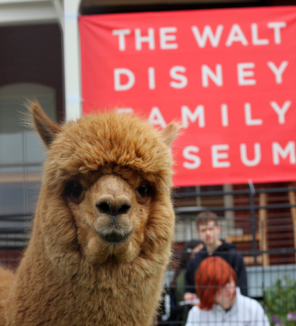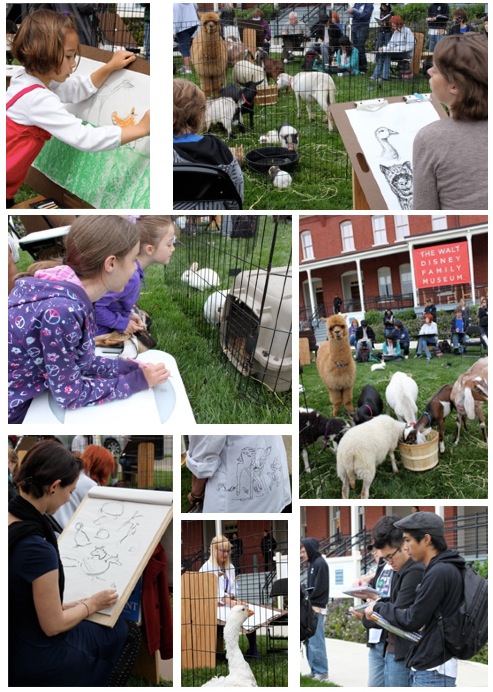 It was a fulfilling day for those who spent the morning of Saturday, June 25 outside The Walt Disney Family Museum, learning to draw animals from live models, and returning in the afternoon for WDFM historian JB Kaufman’s lecture, The Anatomy of an Animal: Animating a Deer. When asked if they enjoyed the live study session, the assembled crowd voiced a resounding "Yeah!"
It was a fulfilling day for those who spent the morning of Saturday, June 25 outside The Walt Disney Family Museum, learning to draw animals from live models, and returning in the afternoon for WDFM historian JB Kaufman’s lecture, The Anatomy of an Animal: Animating a Deer. When asked if they enjoyed the live study session, the assembled crowd voiced a resounding "Yeah!"
Kaufman remarked that it took many years for Bambi to materialize from paper to the screen. He believed that it began as early as 1933 when producer-director Sidney Franklin bought the film rights to Felix Salten’s book. Franklin ultimately realized that it could not be a live-action film, so he collaborated with Disney to create an animated feature film. Walt wanted Bambi to be more lifelike, character animation with realistic subtleties. Work on Bambi at the Disney Studio did not commence until 1938. During the four years it took to complete Bambi, the world had changed. Kaufman recapped what events took place such as the transfer of Disney's distribution rights from United Artists to RKO Radio Pictures, Multiplane camera technology, Walt Disney Productions' first public stock offering, a devastating strike, and the onset of World War II redirecting the focus of the Studio to the war effort. Sharon joined the Disney family, and Walt’s parents passed away. Although Bambi was considered a full-length animated film at 70 minutes, it was only six minutes longer than the economically-produced smash hit Dumbo (at 64 minutes).
It was a technical challenge to animate animals realistically. Walt wanted to ensure that the animators had everything they needed to create Bambi with realism and heightened subtlety. Live animals were brought in for the animators to study and sketch their movements, and master art instructor Rico LeBrun was hired to teach. Kaufman compared the fawns in Snow White and the Seven Dwarfs to the deer in Bambi with an emphasis on how the legs performed and moved. Instead of stick-like legs, Bambi had well articulated joint movements from the hip to the hoof. Bambi’s movements were analogous to human movements, or the leaping stages of a frog, and these movements changed with age, just as a child matures from a toddler to an adult. Yet, with the lifelike movements, there was a fine balance with fantasy in creating the face and character of Bambi.
Legendary animators Frank Thomas and Ollie Johnson expressed that Bambi was the culmination of the advanced development of Disney animation that had begun with Snow White. Kaufman, however, feels that Bambi stands alone as an unusual and distinctive delicacy of animation. We watched the example of a romantic sequence of doe and buck frolicking and rejoicing in the arrival of Spring (accompanied by the song, I Bring You a Song), which impressed us with the same sentiments. J.B. screened a bird flight sequence that was so successful that it has been repeated in several later films. When Bambi was released in 1942, trailers and posters promoted the movie as a great love story. Our senses were opened up to new dimensions and approaches, and I’ll be seeing Bambi again with a different set of ears and eyes.
Olga Woo
Volunteer at The Walt Disney Family Museum

Images above: 1) An alpaca visits the WDFM! 2) Live-study sketch session at the Museum, June 25, 2011. Photo highlights courtesy of The Walt Disney Family Museum.
